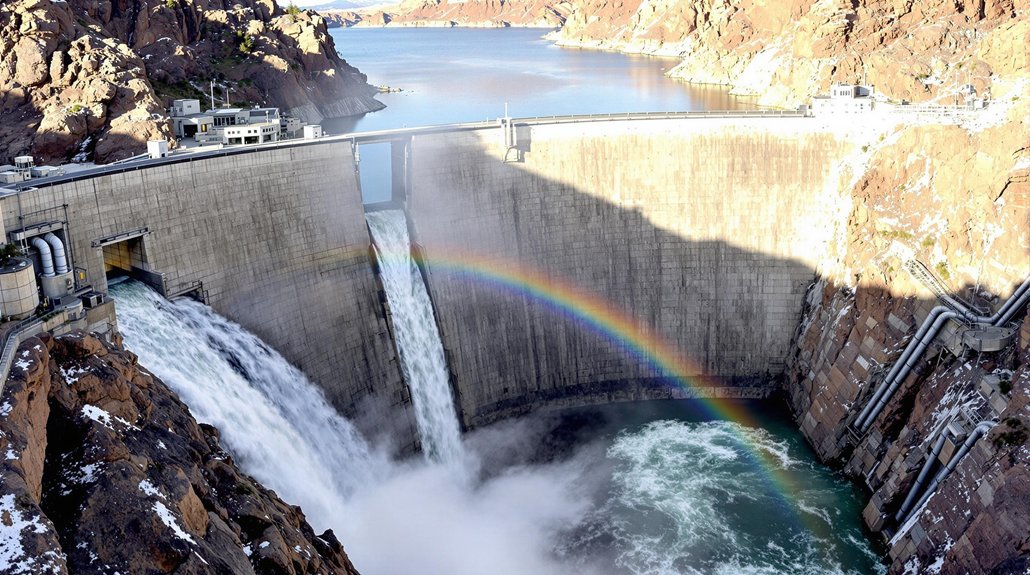Hydropower harnesses falling water’s raw energy to generate electricity – it’s basically gravity doing the heavy lifting. Water from reservoirs flows through massive pipes called penstocks into turbines, spinning them like giant water wheels. These turbines, rotating at mind-boggling speeds, drive generators that convert mechanical energy into electrical power. The process powers 15% of global electricity needs and can run for decades. There’s more to this engineering marvel than meets the eye.

Water plunges down massive concrete walls, channeling raw kinetic energy into electricity that powers millions of homes. It’s a surprisingly simple process, really – just water doing what water naturally does: fall. But humans, being the clever creatures we are, figured out how to harness this tumbling force through an intricate system of dams, turbines, and generators.
Nature’s plunging power becomes our electricity, thanks to human ingenuity and gravity’s endless pull.
The whole operation starts with a reservoir, fundamentally a giant bathtub of potential energy. When power is needed, operators open intake gates, sending water racing through massive penstock pipes. Think of them as nature’s water slides, except instead of screaming teenagers, they’re delivering thousands of gallons of water straight to the turbines. The higher the drop – or “head” as engineers call it – the more power you can squeeze out of each gallon. The system efficiently manages peak demand by releasing more water during high-usage periods.
Inside the powerhouse, the real magic happens. Water hits the turbine blades like a liquid hammer, spinning them at mind-boggling speeds – we’re talking 50 to 60 rotations every second. Different turbine types handle different conditions: Francis, Kaplan, Pelton. They’re like specialized tools in nature’s toolbox, each perfect for specific water conditions. Today, these systems generate an impressive global electricity share of 15% of the world’s power.
The turbine’s spinning shaft connects to a generator, where physics gets fancy. An electromagnet spins inside wire coils, and through the miracle of electromagnetic induction, mechanical energy transforms into electrical current. It’s almost too easy – no burning coal, no splitting atoms, just falling water doing all the work.
Of course, hydropower isn’t all rainbows and clean energy. The presence of dams can cause serious changes to river flow patterns. Dams dramatically alter river ecosystems, block fish migration, and flood vast areas of land. Sometimes entire communities get displaced for reservoir creation.
And here’s an ironic twist – decomposing vegetation in reservoirs releases methane, a greenhouse gas. Still, the benefits are hard to ignore: renewable energy, low operating costs, and facilities that last longer than most marriages – 50 to 100 years. Plus, these concrete giants help control floods and provide irrigation. Not bad for glorified water falls.








